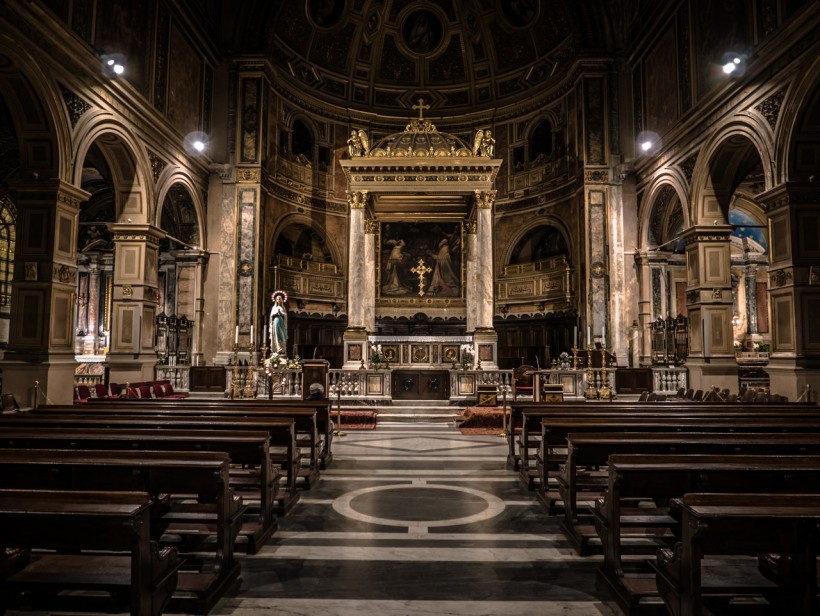You don't have to travel internationally to find amazing, awe-inspiring religious sites and attractions. There are plenty right here in the United States.
The following are some of the religious sites you might want to visit if this is a priority for you.
Jesus at Sight & Sound Theatres Branson
Branson, Missouri, is a destination known for its live entertainment and theater, which is wholesome and family-friendly.
One of the most popular shows in Branson is Jesus at Sight & Sound Theatres.
The Jesus performance travels along with Jesus, highlighting the miracles performed. The production gives insight into the life and times of Jesus Christ.
The Sight & Sound venue is the world's most famous Christian theater, and it's known for other productions like Joseph and the Miracle of Christmas. The theater seats 2000 and has a 300-foot stage that surrounds the audience on three sides.
The show uses elaborate costumes, special effects, and advanced sound and lighting for an immersive experience.
The original script of the production is Biblically accurate.
Temple Emanu-El
Temple Emanu-El is one of the world's largest Jewish Temples, with a sanctuary that's more than 100 feet tall and wide and 175 feet long. There's seating for thousands of people, and worshippers have been coming to the New York location since 1845.
Congregation Emanu-El is the first Reform Jewish congregation in New York City. It's located in Manhattan's Upper East Side, and it houses the Bernard Museum of Judaica with more than 1000 objects.
The enormous limestone building includes a combination of Byzantine and Romanesque influences along with Moorish and Art Deco styles. Visitors can tour Temple Emanu-El Sunday through Thursday unless there's a holiday or funeral service.
Chapel of the Holy Cross
The Chapel of the Holy Cross is an architectural marvel built directly into the red rocks of Sedona.
The church was designed by Marguerite Brunswig Staude, a sculptor, and student of Frank Lloyd Wright, in the 1950s.
The primary stained glass window comes together with a large cross, and the structure overlooks the Verde Valley. The chapel is located at the north end of the Red Rock Scenic Byway.
The chapel is Roman Catholic, and it offers views of Cathedral Rock, Courthouse Butte, Bell Rock, and most of the eastern rim of Sedona.
Anyone is invited to attend Monday evening prayer services that take place at 5 p.m.
Islamic Center of America
The Islamic Center of America is a Dearborn, Michigan mosque. It's 120,000 square feet, making it the largest North American Mosque and the oldest Shia mosque in the country.
The mosque was created in response to a growing Muslim population in Detroit in the mid-20th century. The center first opened at a location in Detroit in 1963. The Islamic Center of America outgrew the original location and moved to Dearborn in 2005.
Temple Square
Temple Square is five city blocks in downtown Salt Lake City. It's the area that surrounds the Salt Lake Temple of The Church of Jesus Christ of Latter-day Saints. The square focuses on worshiping Jesus, and the Salt Lake Temple is its centerpiece.
The Salt Lake Temple is a sacred place of worship for members of the church. Temple Square is also the headquarters of the Mormon church.
In 1847 after the Latter-day Saints entered the Salt Lake Valley, Brigham Young selected a location. The temple was finished in 1893, and it was meant to represent the physical and spiritual center in the lives of the pioneers.
The temple remains a central point of reference in Salt Lake City.
Touro Synagogue
The Touro Synagogue is located in Newport, Rhode Island. Built in 1763, it's the oldest synagogue building still standing in the U.S., and it's the only surviving one that dates back to the colonial area. It was declared a National Historic Site in 1946.
The Touro Synagogue was designed by British architect Peter Harrison, and it's his most iconic work.
The building remains an active Orthodox synagogue.
Quinn Chapel AME Church
Quinn Chapel AME Church is in Chicago. It's home to the city's first African-American congregation. In 1847, a group organized as a congregation of the African Methodist Episcopal Church, which was the first independent black denomination in the country.
Leading up to the Civil War, the church was an important part of the Chicago abolitionist movement. In 1871, the Great Chicago Fire destroyed the original church, and the current structure was built in 1892.
In 1977, the church was designated as a Chicago Landmark, and in 1979, it was included on the National Register of Historic Places.
Billy Graham Library
The Billy Graham Library is a museum as well as a library. It's located on the site of the international headquarters of the Billy Graham Evangelistic Association, which is in Charlotte, North Carolina.
There are galleries in the library that show the presentations, artifacts, pictures, music, and voices from Graham's ministry. There's also a gallery entirely devoted to Billy Graham's wife, Ruth Bell Graham.
Crystal Cathedral
The Crystal Cathedral is in Garden Grove, California, officially known as the Christ Cathedral. It's home to the Dioceses of Orange, and the reflective glass building seats nearly 2,250 people. When the structure was completed in 1981, it was described as the world's largest glass building. It also houses the Hazel Wright Memorial Organ, one of the largest musical instruments in the world.
Museum of the Bible
Finally, in Washington, D.C., is the Museum of the Bible.
The museum opened in 2017, and it has a permanent collection of around 1,150 items, with thousands of other pieces on loan.
The museum works to provide what's described as a scholarly perspective on the Bible's historical impact. Each of the six museum floors has a different exhibit emphasizing the history or impact of the Bible.
The three permanent exhibit floors each measure 55,000 square feet. The first floor includes ancient artifacts, the second floor focuses on the impact of the Bible on world culture, and the third floor is the general narrative of the Bible.
On the fourth floor is a presentation of biblical archeology, and the fifth level includes a performing arts theater.
The sixth floor is a rooftop viewing area that overlooks the U.S. Capitol and the National Mall.
© 2024 NatureWorldNews.com All rights reserved. Do not reproduce without permission.
* This is a contributed article and this content does not necessarily represent the views of natureworldnews.com






